Replica Places Study
The Places Study feature in Replica transforms raw mobility data into clear, actionable insights for urban planners, policymakers, and researchers. It provides a granular view of daily life dynamics for residents, visitors, and commercial vehicles nationwide, all through a redesigned interface that makes complexity approachable.

Objective
The original Study feature was a quickly built MVP created by developers during the pandemic. It worked, but the experience was clunky, inconsistent, and lacked design vision. Users could see the potential but struggled to navigate the data or connect maps, tables, and filters in a meaningful way.
Role & Responsibilities
-
Led end-to-end product design from research to launch
-
Partnered with CEO, product managers, and engineering to define scope and priorities
-
Introduced design systems and UX patterns to replace ad-hoc interface decisions
-
Worked closely with customer success to ensure the redesign addressed real user pain points

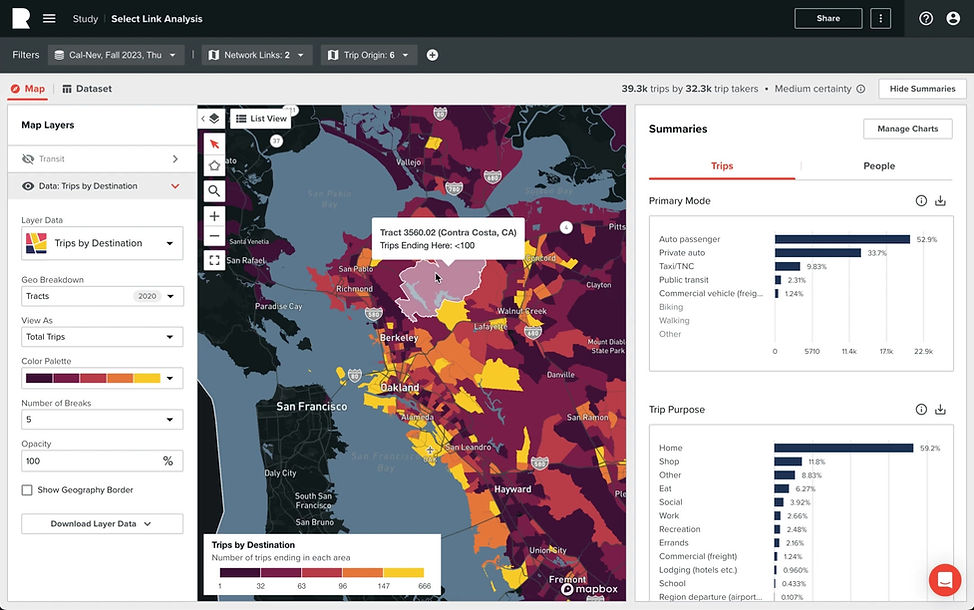
Research and Insights
Through interviews, surveys, and support feedback, I uncovered three key barriers:
-
Data access was too abstract – even advanced users struggled to reach raw datasets
-
Filtering lacked flexibility – users wanted both tabular and geospatial controls that could scale.
-
The experience felt fragmented – maps, charts, and filters did not feel connected.

The Approach: Early Concepts and Sketching
I began with quick, low-fidelity sketches to explore ways of unifying maps and tables, streamlining filtering workflows, and improving the overall hierarchy of information. These sketches allowed me to quickly test different layouts, prioritize interactions, and uncover potential usability issues before investing time in detailed design.
Alongside the sketches, I developed system-level flow diagrams that mapped every step a user could take, from defining datasets to visualizing results. This provided a shared reference for design and engineering, ensuring the experience was intuitive for end users while remaining technically feasible and scalable.
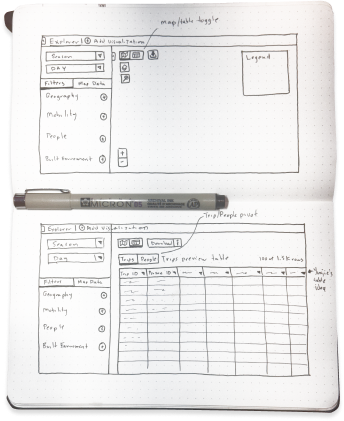
Initial paper sketch exploring map/table toggling
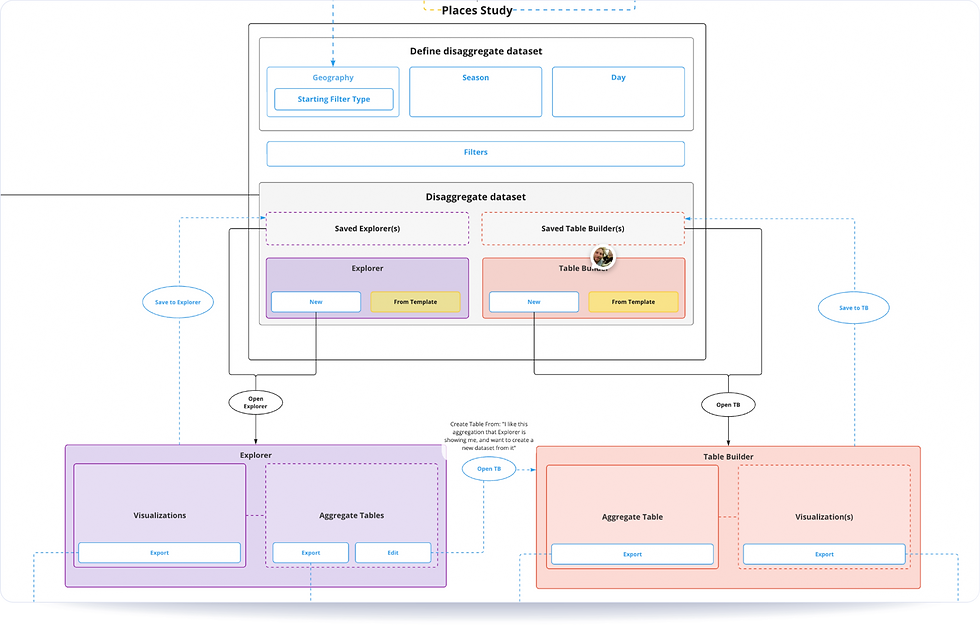
From rough layout sketches to defining the full interaction model
The Approach: Prototyping and Iteration
Built clickable prototypes in Figma and tested them with internal teams and pilot users. Feedback loops were fast and collaborative, with weekly iterations informed by both qualitative insights and technical feasibility checks.

The Approach: Systematizing the UI
Built clickable prototypes in Figma and tested them with internal teams and pilot users. Feedback loops were fast and collaborative, with weekly iterations informed by both qualitative insights and technical feasibility checks.
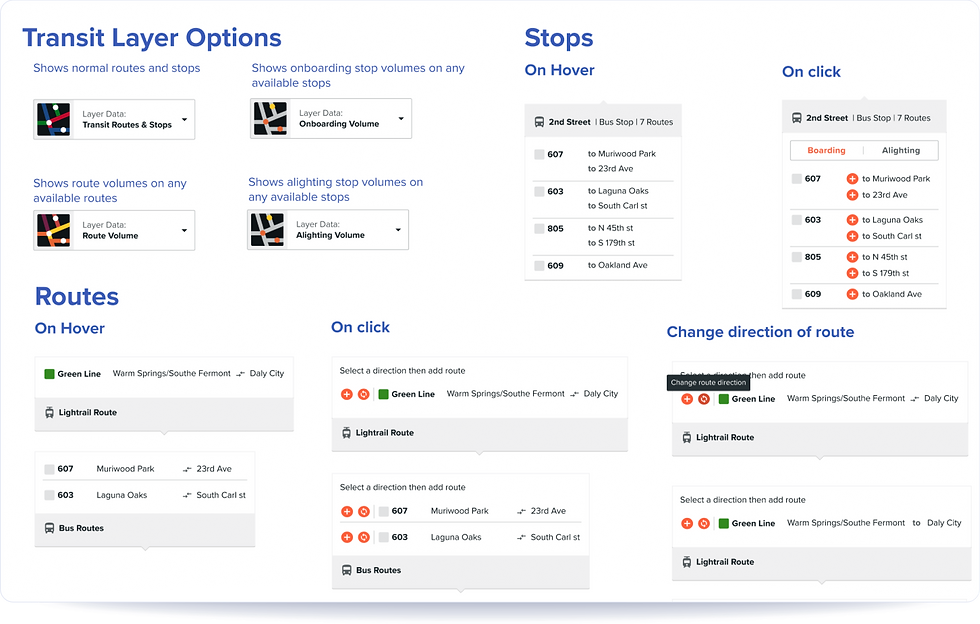
UI showing Transit Layers and Map Interactions
Key Improvements
-
Direct Dataset Access: One-click download of disaggregated data for deeper analysis
-
Scalable Filtering: Filters that worked seamlessly across both map and table views, handling multiple attributes
-
Integrated Geospatial Analysis: One-click download of disaggregated data for deeper analysis
-
Cohesive Information Architecture: Maps, charts, and filters work together in a connected layout.
Impact
-
3x growth in active users within 12 months
-
Contributed to Replica surpassing revenue targets and moving toward profitability
-
Became a go-to tool for urban planning, transportation, housing, and public safety initiatives


What Made This Work
The success of Places Study came from balancing system-level design thinking with practical iteration. The result was a tool powerful enough for advanced analysts yet approachable for newer users, making complex datasets easier to explore, analyze, and act on.
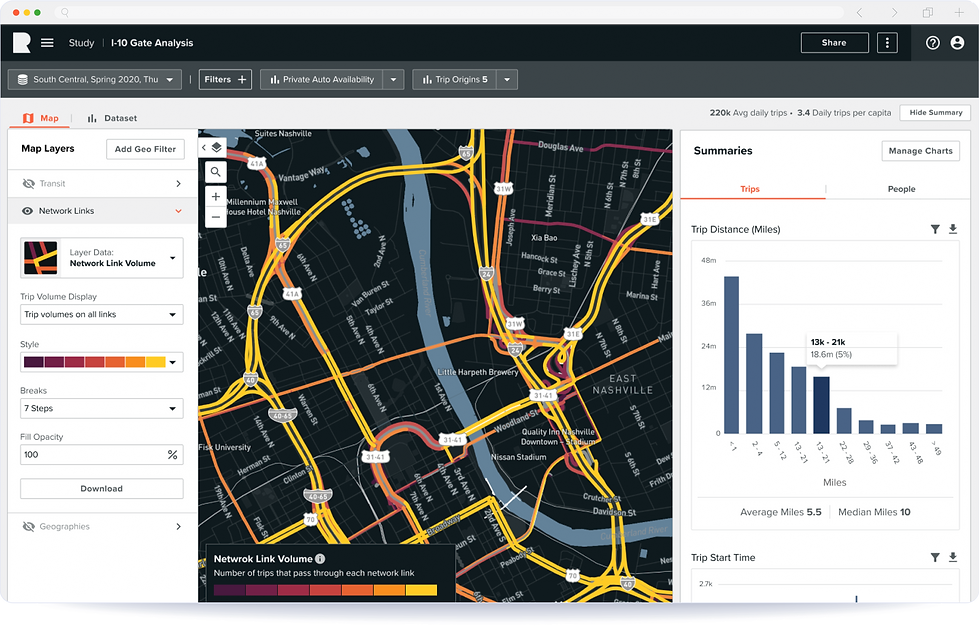
Study showing Network Link Volume and Analysis

Powerful filtering options only a click away
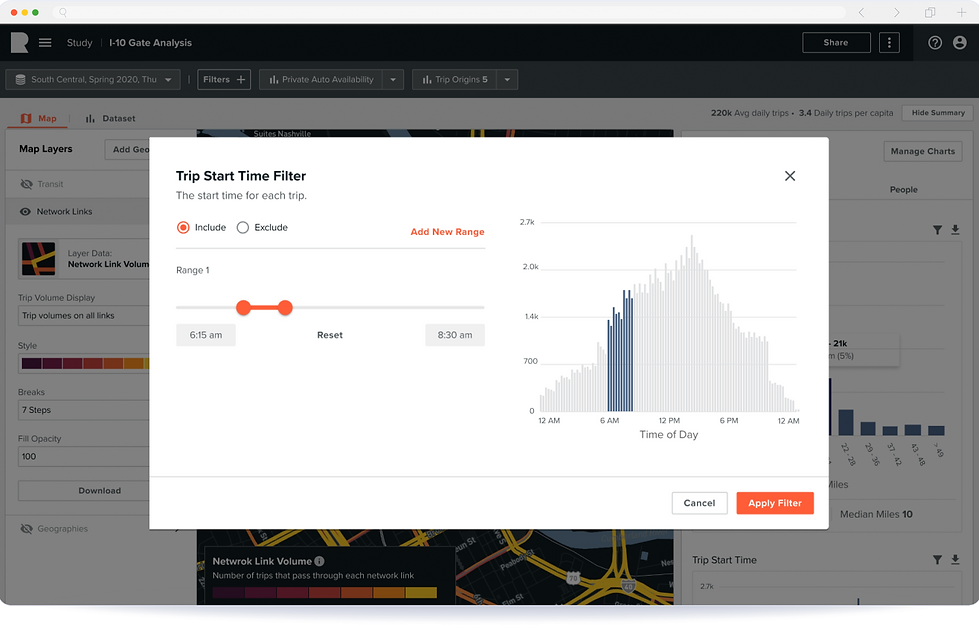
Improved filtering allowed visual understanding of data distribution
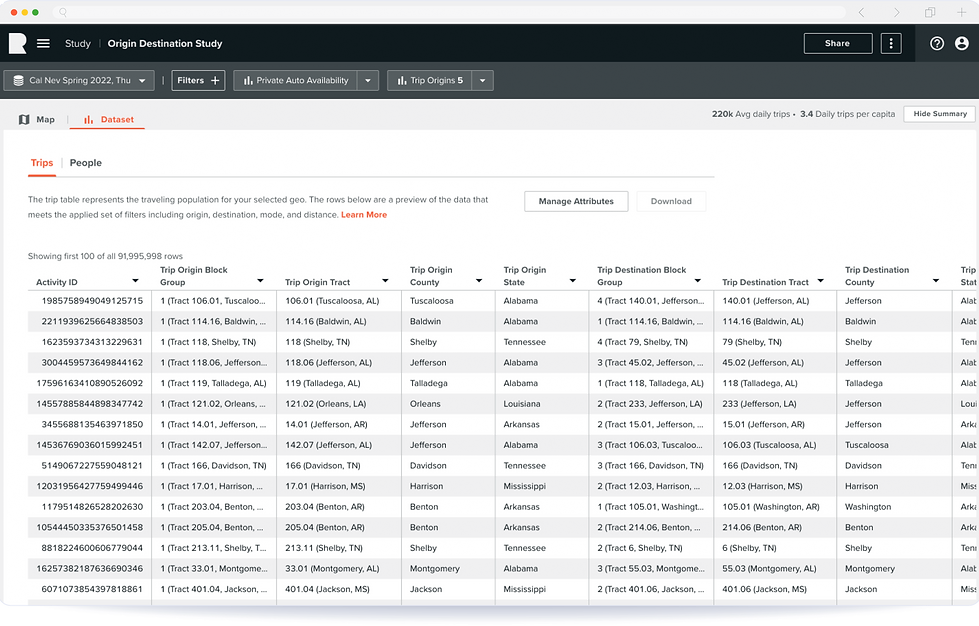
New Table View allowed users to view and export the underlying data used in a Study






